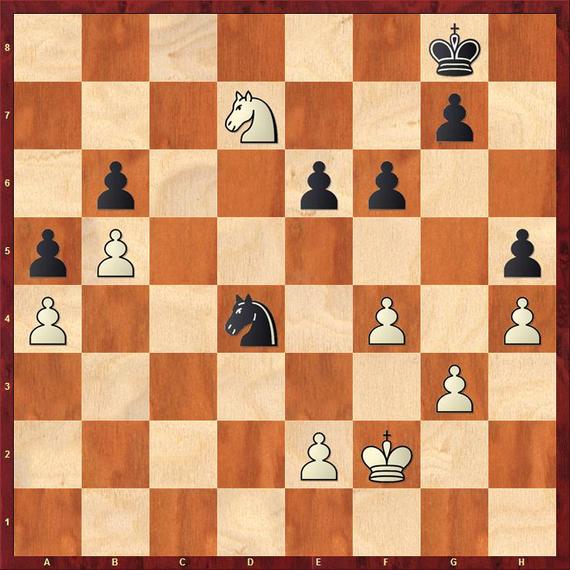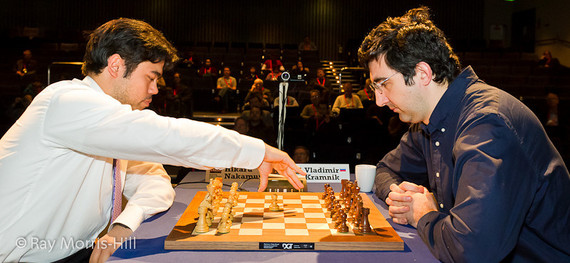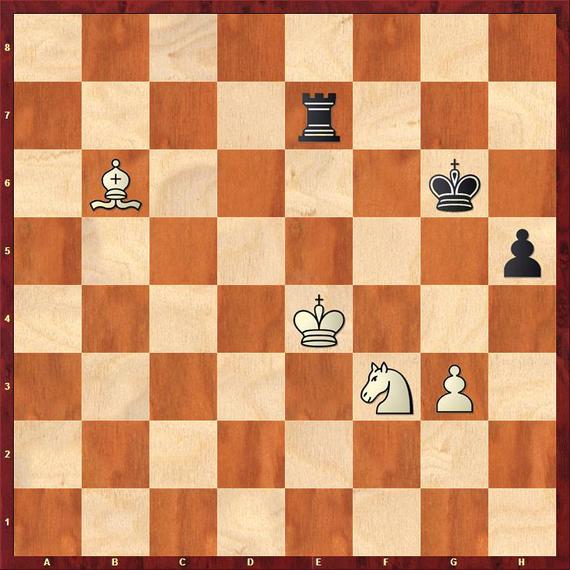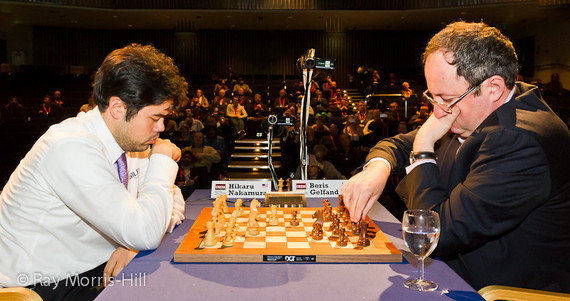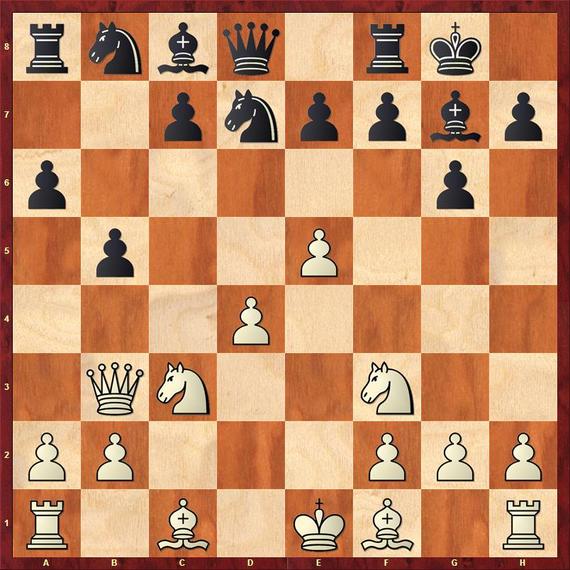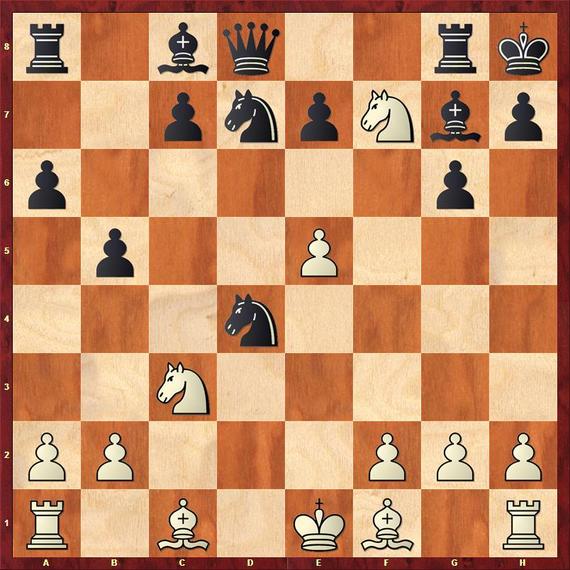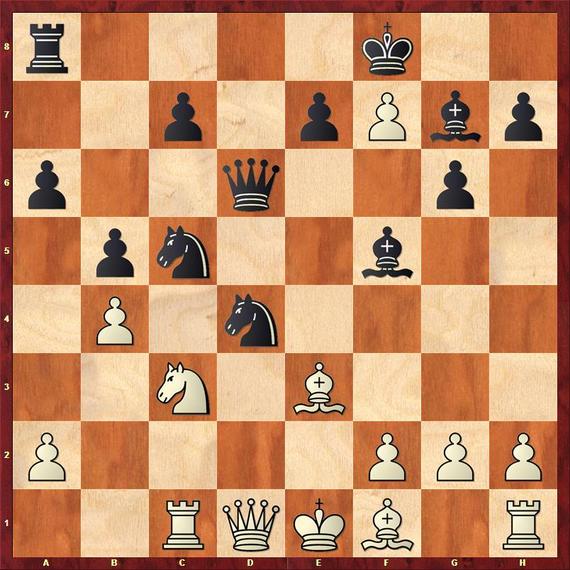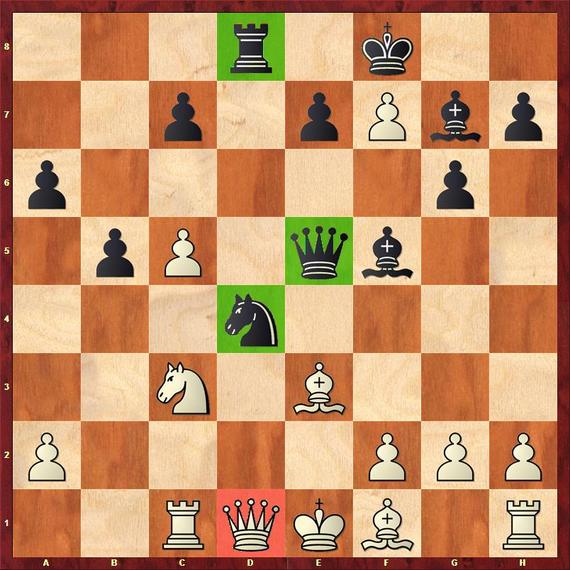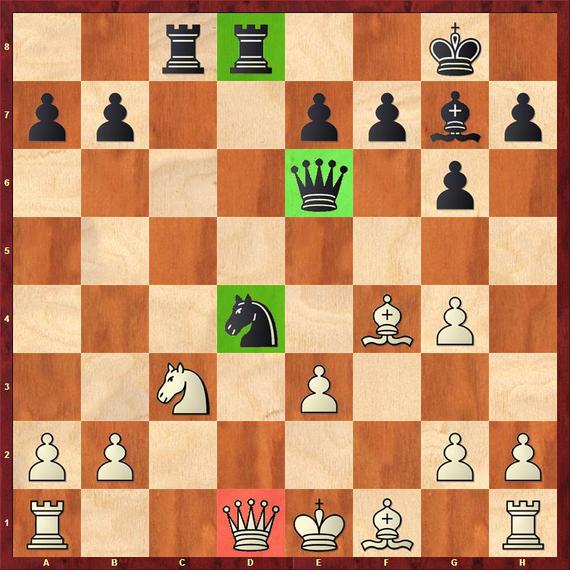On the day the NFL team Washington Redskins fumbled six times and threw one interception, Hikaru Nakamura's performance in England seemed almost flawless. Last Sunday, the top American grandmaster won the London Chess Classic, a rapid chess competition, leaving many world class players behind, including two former world champions Vishy Anand and Vladimir Kramnik.
It has been a good year for Hikaru. In classical chess, he moved to the third place on the January 2014 FIDE rating list behind Magnus Carlsen and Levon Aronian, and ahead of Kramnik. The faster the time control, the better Nakamura plays. The rapids in London were made for him.
The London organizers used the FIFA World Cup formula, dividing 16 participants into four groups with two players from each group advancing to the elimination rounds. Nakamura and Boris Gelfand were in the same group and ended up playing the final.
Nakamura eliminated Nigel Short in the quarterfinals, Kramnik in semifinals and beat Gelfand in the final, all with the score 1.5-0.5. His match with Kramnik was shaky, but the Russian played as if under a spell. No matter what the position, Kramnik tends to trip up and becomes Hikaru's victim.
At the World Team Championships last month in Antalya, Turkey, Nakamura outplayed Kramnik in a positional masterpiece, using the square c6 as an outpost and winning a tactical skirmish in the end. With this victory, the U.S. team beat Russia with the score 3 -1, although the Russian team eventually took first prize ahead of China and Ukraine. The U.S. team finished fourth.
Nakamura - Kramnik
World Teams, Antalya 2013
38...Nxb5
With the white knight deep in black's territory, Kramnik unleashes a spectacular combination. It sets the a-pawn into motion, making it seemingly uncatchable.
39.axb5 a4 40.Nc5!
An astonishing refutation. Nakamura returns his knight and his b-pawn runs faster.
40...a3
White wins after 40...bxc5 41.b6 a3 42.b7 a2 by promoting with a check 43.b8Q+.
41.Nb3
White is a piece up. Game over. Kramnik made 10 unnecessary moves before he resigned.
41...a2 42.Ke3 Kf7 43.Kd4 Ke7 44.e4 e5+ 45.fxe5 Ke6 46.Na1 fxe5+ 47.Kc3 g5 48.Kb2 gxh4 49.gxh4 Kd6 50.Nb3 1-0
In the quarterfinals in London, Kramnik eliminated Anand and initially played well the first game against Nakamura, reaching a winning position. But imprecise play left him few options and he blundered.
Nakamura - Kramnik
London 2013
After 64 moves the players reached the diagram position below. It is difficult to imagine the game ending in two moves. Sometimes mishaps happen even to world champions.
65.Ne5+ Kf6?
One move blunder. After 65...Kh7 white can still play, first trying to win the h-pawn. It could be a long torture, but Kramnik ends it at once, walking into a pin.
66.Bd8 Black resigned.
The sharp Grünfeld defense game turned out to be decisive in the Nakamura - Gelfand final. Both players knew where they were headed, having played the Hungarian line recently. It seemed that the 45-year-old Israeli had Hikaru on the ropes. Although being an exchange sacrifice down, Gelfand's pieces cavorted all over the place. Nakamura had to tread carefully. Finding difficult moves, the American eventually put his opponent in a bind and Gelfand succumbed to the pressure.
Nakamura - Gelfand
London 2013
1.d4 Nf6 2.c4 g6 3.Nc3 d5 4.Nf3 Bg7 5.Qb3
The Russian system, one of the most complicated and dynamic lines against the Grünfeld defense.
5...dxc4 6.Qxc4 0-0 7.e4 a6
The Hungarian answer, planning a quick expansion on the queenside.
8.e5
An old attempt to refute the line by sharp, forcing play. Most positional players simply develop with 8.Be2.
8...b5 9.Qb3 Nfd7
A critical starting position from which the line either rises or falls.
10.Ng5
In his extensive 400-page treatment The Grünfeld, published by Everyman Chess, David Vigorito calls it extravagant. "But it supports the break e5-e6 and the knight may come to the e4-square," he writes.
The new, massive Mega 2014 database shows only 22 games with this knight leap. It was also played nearly four years ago by Magnus Carlsen against Lenier Dominguez, Wijk aan Zee 2010. Black replied 10...Nb6.
Gelfand and Nakamura faced two other possibilities recently:
A. 10.e6 used to give black fits, but not anymore. Black is fine after 10...fxe6 11.Be3 (11.Ng5 Bxd4 12.Qxe6+ Kg7 13.Be3 c5; 11.Qxe6+ Kh8) 11...Nf6 12.a4 b4! 13.Qxb4 Nc6 14.Qa3 Qd6 15.Be2 Nb4 16.Rc1 Bb7 17.h3 Bxf3 18.gxf3 Nbd5 19.a5 Rfb8 20.Bd2 Qxa3 21.bxa3 Nxc3 22.Rxc3 draw, Moiseenko,A (2699)-Gelfand,B (2764) Tromso 2013;
B.10.Be2 c5 11.e6 fxe6 (11...cxd4 is Larry Kaufman's interesting piece sacrifice that Nakamura was willing to test.) 12.Qxe6+ Kh8 13.dxc5 Ne5 14.Qd5 Qxd5 15.Nxd5 Nxf3+ 16.Bxf3 Bb7 17.Be4 Rd8 18.Nf6 Nc6 19.Ng4 Na5 20.Bxb7 Nxb7 21.c6 Nd6 22.0-0 Rac8 23.Bg5 Nf5 24.Ne3 Nxe3 25.fxe3 Rxc6 26.Bxe7 Re8 27.Rac1 Re6 28.Bc5 Bxb2 29.Bd4+ Bxd4 30.exd4 R8e7 draw, Nakamura,H (2786)-Giri,A (2732) Antalya 2013.
10...Nc6!?
The attack of the d-pawn is rather recent. Black also plans to force the white queen from the diagonal a2-g8 with Nc6-a5. But black may have time to undermine white's center with the c-pawn: 10...c5. I have added some lively variations, checked by Houdini 4 Pro, to the replaying window below.
11.Nxf7?!
Nakamura makes a risky decision to win the exchange. Otherwise, black is fine: After the bizarre 11.Ne6 Na5! is the best. The solid 11.Be3 Na5 is equal.
11...Rxf7
Forced. Black is smothered after 11...Nxd4 12.Nh6+ Kh8 13.Qg8+! Rxg8 14.Nf7 mate.
12.e6 Nxd4 13.exf7+ Kf8 14.Qd1
White has the exchange, but the black pieces come quickly to life.
14...Nc5
Most engines go for 14...Ne5! to protect the knight on d4 with c7-c5, for example 15.Be3 (15.f4? Bf5!) 15...c5 with black's advantage.
15.Be3 Bf5 16.Rc1
After some thought, Hikaru decided to keep the tension instead of surrendering the dark squares with 16.Bxd4 Bxd4.
16...Qd6 17.b4
After the quiet 17.Be2 Nxe2 18.Qxd6 cxd6 19.Kxe2 Nd3 20.Rb1 Nxb2 21.Rxb2 Bxc3 black's position is preferable.
17...Ne4?!
Exchanging pieces is good for white. The retreat 17...Nce6 was preferable. But black had a spectacular way to continue the attack: 17...Rd8! 18.bxc5 Qe5
Black is a rook down, but the threat 19...Nc2+, winning the queen, can't by stopped. White would have sufficient material, but has to figure out how to develop his kingside. Something similar happened almost 74 years ago in the game between Edward Lasker and Rueben Fine (you can replay it below).
In both cases, Black has a dominant knight in the center supported by the rook and the queen is pinning on the e-file.
18.Nxe4 Bxe4
Nakamura now makes four strong consolidating moves. Interestingly, the computers would handle the situation the same way.
19.f3 Bf5 20.Qd2 Rd8 21.Kf2 Kxf7 22.Be2 Qf6?!
There was no need to give up the c-pawn. Gelfand could have protected it with 22...Rd7 before starting any action. The strong knight gives him excellent compensation.
23.Rxc7
Obviously satisfied, Hikaru left the table for a few moments.
23...Ne6
Gelfand probably overlooked white's next move. He could have set up a trap: 23...h5 24.Bg5?! and only now 24...Ne6! 25.Qxd8 Qxg5 26.Qd5 Bd4+ 27.Ke1 (27.Kf1 Qe3-+) 27...Qxg2 28.Rf1 Qxh2 and the active light pieces are as good as the clumsy white rooks.
24.Rd7
White should be winning and Nakamura plays well the technical part.
24...Rc8 25.Bd3
Increasing the advantage, although the computers are asking for 25.Bd1, followed by Bd1-b3. The light bishop would cover the square c2 and at the same time pin the knight on e6.
25...Rc3 26.Bxf5 gxf5 27.f4
Preventing counterplay on the diagonal b8-h2. For example, 27.Rc1 Rxc1 28.Qxc1 Qh4+ 29.Kg1 Be5 30.h3 Qg3 although white should win after 31.Rd5.
27...Rc4
Swinging the rook to the square e4 does not help. White has the edge also after 27...Qh4+ 28.g3 Qh3 29.Qd1.
28.Rc1 Re4 29.g3 h5 30.h4
Hikaru calmly stops black's activity and brings home the victory.
30...Qg6 31.Bc5 Bf6 32.Re1 Qg4 33.Rxe4 fxe4 34.Qd1 Qf5 35.Rd5 Qh3 36.Qf1
After 36...Qg4 (36...Qh2+ 37.Qg2) 37.Qe2 forces the queens off the board. White wins.
Black resigned.
Note that in the replay windows below you can click either on the arrows under the diagram or on the notation to follow the game.
Photo images by Ray Morris-Hill.


